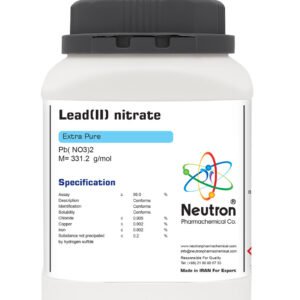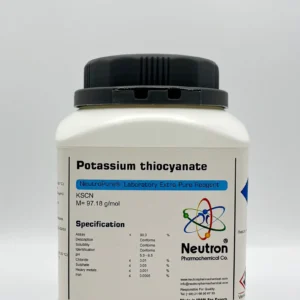Perchloric acid 70%
| Density | 1.68 g/cm3 (20°C) |
| HS Code | 28111980 |
| Storage | Storage at +5 to +30°C |
| SDS | available |
| R phrase | R 5-8-34 |
| S phrase | S 23.2-26-36/37/39-45 |
| Odour | odourless |
| Form | liquid |
| Color | colourless |
| Solubility in water | soluble( 20 °C ) |
| boiling point | 198.7 °C |
| Melting point | _18 °C |
| Assay | ≥ | 70.0 | % |
| Description | Conforms | ||
| Identification | Conforms | ||
| Solubility | Conforms | ||
| Chloride | ≤ | 0.001 | % |
| Sulfate | ≤ | 0.001 | % |
| Heavy metals | ≤ | 0.0001 | % |
| Calcium | ≤ | 0.0001 | % |
| Iron | ≤ | 0.0005 | % |
| Residue on ignition | ≤ | 0.005 | % |
Perchloric Acid 70% is a colorless to pale yellow, highly corrosive, and strong mineral acid solution commonly used in laboratories and industries. It is known for its strong oxidizing properties and ability to act as a powerful acid in various chemical reactions.
🏭⚗️ Production
Perchloric acid is produced industrially by the reaction of sodium perchlorate with hydrochloric acid, followed by purification and concentration to the desired strength. The 70% solution is a common concentrated form used for various applications.
🔬 Properties
Perchloric acid 70% has the chemical formula HClO₄ and a molar mass of approximately 100.46 g/mol for the pure acid. The 70% solution is a clear, highly corrosive liquid with a strong acidic odor. It is miscible with water in all proportions and has strong oxidizing properties, especially when heated or concentrated. It can form explosive mixtures with organic materials and requires careful handling.
🧪 Applications
Perchloric acid 70% is widely used as a strong acid in analytical chemistry, especially for digestion and preparation of samples. It is also used in the manufacturing of rocket propellants, explosives, and in various oxidation reactions in the chemical industry.
⚠️ Safety
Perchloric acid is highly corrosive and a powerful oxidizer. It poses severe risks of chemical burns, fire, and explosion if improperly handled. Exposure can cause severe skin and eye damage and respiratory irritation. Handling requires specialized equipment, proper ventilation, and storage away from organic materials and reducing agents, preferably in a dedicated perchloric acid fume hood.





